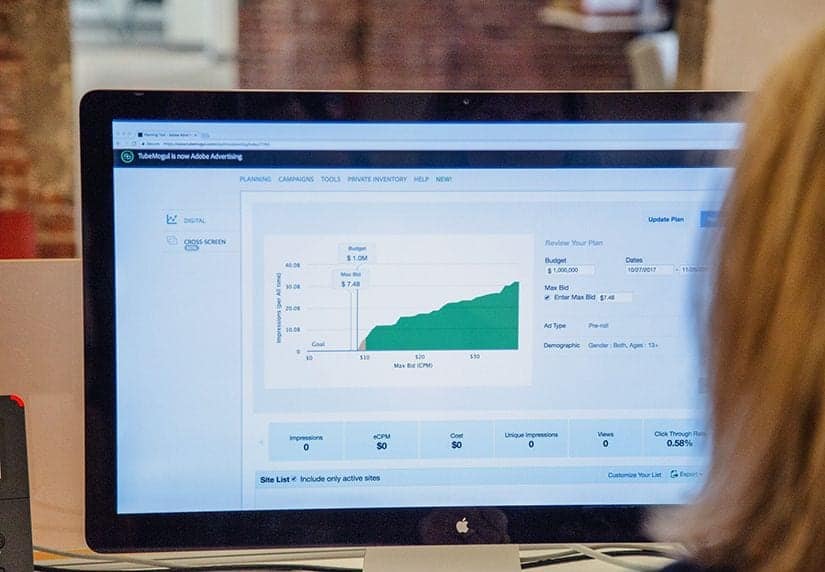How to Up Your Audience Targeting Game With Google Customer Match
Last month, Google released a new type of audience targeting that allows advertisers to upload their own CRM data. Customer Match allows advertisers...

This article originally appeared on Forbes.com.
Big data is arguably the most prevalent buzzworthy phrase in advertising right now. Brands and agencies have access to more data now than ever before. But it can be overwhelming and confusing to know which data is important and how best to leverage it. However, there is one type of data that will likely bring significant benefits to many advertisers rather quickly.
Let’s start with the major news items that have rolled out during the past few months concerning data and advertising. The common thread: purchase-based consumer data. All advertisers, particularly those that are concerned about keeping up with bigger spending rivals, should be paying close attention. Here are a few of the key tidbits from recent weeks that are sharpening focus on what is to come.
Purchase-Based Consumer Data: The Link Between Online And Offline
In May, Google revealed that it is using credit card transaction data to demonstrate to advertisers that ads served on its network drive actual sales, not just online but in-store. This announcement was met with a lot of buzz and scrutiny. On one hand, brands can now have visibility into how digital advertising campaigns directly impacts offline sales, providing a solution to the ROI challenge that has plagued the digital advertising industry. However, consumers are concerned about how their personal information and data are being used. Oracle announced a similar partnership with Visa last summer, which did not receive as much attention as did the Google revelation.
Yet within digital advertising, this form of purchase-based data has actually been around for a while. Consumer purchase data obtained via shopper loyalty cards has been available to advertisers for several years to both target and validate the effectiveness of digital media, particularly on Facebook.
Purchase-based consumer data is so valuable not only because it provides a more accurate ROI, but it also better informs the way advertisers target media. Purchase-based targeting drives enormous increases in media productivity by delivering impressions to those consumers most likely to buy, as opposed to sending impressions to those consumers who just happen to fit a demographic. This reduces waste. Most advertisers could benefit from this waste reduction right now.
TV: The New Purchase-Based Consumer Data Frontier
In April, just a month before Google’s announcement, Oracle and Simulmedia announced a partnership focused on applying Oracle Data Cloud’s $3 trillion in household-level purchase-based data to target television advertising. This type of partnership – the application of actual consumer purchase data to audience targeting and outcome measurements – appears to be a first in the TV space.
This approach appears to be working based on the evidence that is now rolling in from the early adopters, such as Zicam. In mid-June, both the American Marketing Association (AMA) and the Wall Street Journal referenced Zicam’s success in applying purchase-based consumer data to TV media buys. In Zicam’s case, instead of targeting a specific gender or age with their media, working with Simulmedia the company was able to use consumer purchase data to identify a more precise target audience of consumers most likely to purchase cold medicine. The Wall Street Journal article also provides a very good overview of the active players in the race to tie purchase-based data to targeting in TV.
Basically, the application of data to television, similar to how it is applied to digital, results in better outcomes. This is primarily due to the redirection of ad buying towards higher composition audiences based on consumer buying behavior. We have validated this approach ourselves with our TV spending clients.
Credit Suisse analyst Omar Sheikh, outlined how stale, old TV networks are positioning themselves for potentially strong growth. He said the TV industry is developing “potentially game-changing advances in the efficiency of linear TV advertising, which we believe will put the medium in a strong position to compete with digital platforms in the long term.” How? Through the application of data, primarily consumer purchase data — the very same data that Google and Oracle have been activating within digital for some years.
The Purchase-Based Bottom Line
If you are an advertising executive responsible for media allocations, you need to study the progression of these events and get moving. If you are not actively testing the application of consumer purchase data against media targeting and measurement, you are behind. If you are still using the same old demographic-based audience parameters (i.e., women ages 18-34, who are fun-loving and have a positive outlook on life) to target your media, you are placing yourself at a competitive disadvantage. If you are not familiar with how this data can drive your business, how do you imagine that you are going to negotiate with media properties that do know how this data can drive your business?
Last month, Google released a new type of audience targeting that allows advertisers to upload their own CRM data. Customer Match allows advertisers...

The End of ROI? The death of third-party cookies is underway. Changes in technology, legislation, and growing consumer awareness are making...

As part of a two-part series, I’m sharing my thoughts on how brands must adapt to succeed in this new era of mobile marketing. Earlier, I addressed...